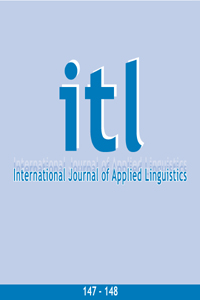 previous article in this issue previous article in this issue | next article in this issue  |

|
Document Details : Title: Development of Fluency and Revision in L1 and L2 Writing in Swedish High School Years Eight and Nine Author(s): LINDGREN, Eva , SPELMAN MILLER, Kristyan , SULLIVAN, Kirk P.H. Journal: ITL - International Journal of Applied Linguistics Volume: 156 Date: 2008 Pages: 133-151 DOI: 10.2143/ITL.156.0.2034428 Abstract : In this paper we use keystroke logging to examine the development of fluency and revision in high school L1 Swedish and L2 English writing. Each writer wrote one text in English and one in Swedish in each year of the study. Using a combination of statistical and automatic analyses of the keystroke log, we attempted to investigate: i) how the on-line writing process in terms of revising, pausing and fluency in first and second language writing changes over time, ii) whether there are on-line writing process variables which can be identified as contributing to text improvement, and iii) whether there are any aspects of L1 writing which can be identified as contributing to L2 writing and learning processes and which may form part of a teaching programme. Previous studies of L2 writers have attested to changes in fluency, pause and revision behaviour, and amount of text produced, although associations with the quality of the final output are not clearly supported. The within-writer comparison of this study addresses differences in fluency, pause and revision behaviour between L1 and L2 writing. A regression analysis looking at quality and two types of revision (Form, and Conceptual) found that form revision frequency was related to the language of writing and that conceptual revision frequency was dependent on linguistic experience rather than on language. The findings suggest that conceptual revision and writing skills are transferred from the L1 to the L2, and that these skills should be taught accordingly. |
